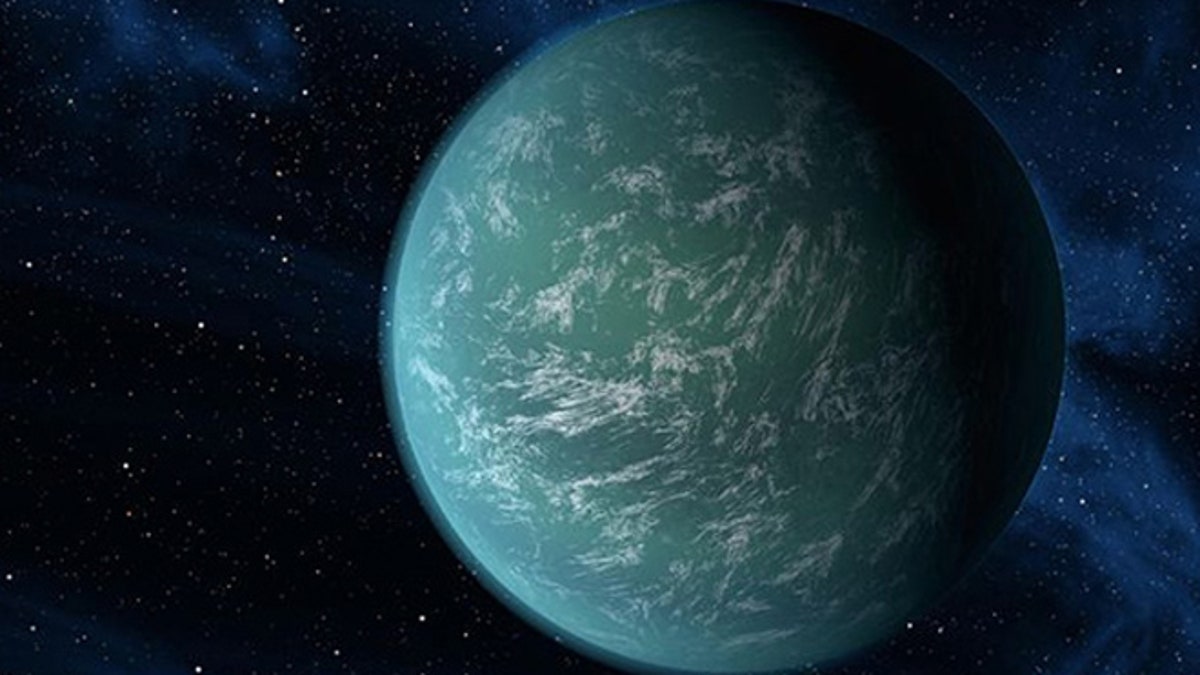
An artist's rendition of an exoplanet. (NASA/JPL-Caltech)
Now we’re detecting dozens of exoplanets within the habitable zones of their stars — and even one world that has similar characteristics as Earth — the next big question will be: do any of these promising worlds host life?
Unfortunately, the answer will remain elusive for some time to come, but that hasn’t stopped scientists from formulating plans to seek out alien biomarkers that could be ripe for detection.
GALLERY: Top 10 Places To Find Alien Life
In a new paper submitted to the arXiv preprint service, astrophysicists Timothy Brandt and David Spiegel of the Institute for Advanced Study at Princeton University, New Jersey, focused on the hunt for the chemical signature of oxygen, water and chlorophyll in the atmospheres of Earth-like exoplanetary atmospheres. Oxygen and water are essential for life as we know it, and chlorophyll is a biomolecule vital for photosynthesis on Earth. Photosynthesis is the extraction of energy from sunlight, a process employed by plants and some microbes, such as cyanobacteria.
So the logic goes: If we can detect these molecules on an Earth-sized alien world, there could be some not-so-unfamiliar form of extraterrestrial life that has evolved to produce chlorophyll to extract energy from their star.
But the challenges to detect such signals are overwhelming, at least for the technology we have today. So the researchers have constructed some computer models in an effort to create hypothetical “second Earths” and the chemical signatures we may detect from afar.
Earth-Likenesses: Have We Discovered Earth 2.0?
The key issue facing any future space telescope set up to search for “Earth 2.0″ is that of contrast. Although analyzing the spectroscopic signature of large exoplanets has been done, often these worlds have wide orbits (well outside the habitable zone) or they are very large (like “hot-Jupiters”). Extracting a spectroscopic signal from a small world within the habitable zone of their star is tough, as the light from the star will overwhelm any reflected starlight signal from the exoplanet. The signal-to-noise ratio will be, basically, horrible.
This is where sophisticated models come in handy; if you can model an exoplanetary atmosphere with components similar to that of Earth, we know what chemical fingerprints to look for in observational data.
Brandt and Spiegel’s models created an ice world, a desert world and a world not so dissimilar to Earth (including oceans and vegetation). All their models assumed cloud cover of 50 percent. Then they simulated what chemical fingerprints could be detected in the spectroscopic signal. By far the easiest signal to detect would be that of water, a goal that could be achieved with technology we have today. But the detection of oxygen would be hard. But what of chlorophyll?
ANALYSIS: Bathing in the Sunset of an ‘Earth-Like’ Alien World
“Finally, we show that the ‘red edge’ of chlorophyll absorption … will be extremely difficult to detect, unless the cloud cover is much lower and/or the vegetation fraction is much higher than on Earth,” the researchers write. “Assuming extraterrestrial chlorophyll to have the same optical properties as the terrestrial pigments, and assuming Earth-like cloud and vegetation coverings, detecting chlorophyll will require a SNR (signal-to-noise ratio) 6 times higher than for diatomic oxygen…”
They point out that chlorophyll will only have as strong a signal as oxygen if the cloud cover is zero or if the planet has a higher proportion of its landmass covered in vegetation.
Although we may be waiting for some time until we can overcome the technological challenges to detect chlorophyll on an alien planet’s surface, it’s fascinating to think that the first hint of alien life could be through the detection of the signature of something that resembles terrestrial flora.
NEWS: Most ‘Earth-Like’ Alien World Discovered
But just because this hypothetical form of extraterrestrial life may extract energy from their host star using a form of photosynthesis, this doesn’t mean we’d necessarily be detecting vegetation as we know it. There could be an entirely different kind of life we won’t fully comprehend until we can view it up-close.
And who knows? Should we detect a nearby exoplanet rich in biomarkers, that could be the motivation we need to mount a future interstellar mission.




















